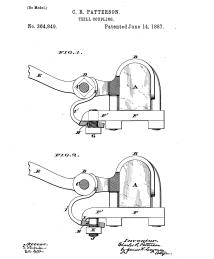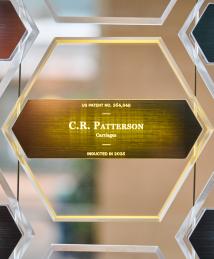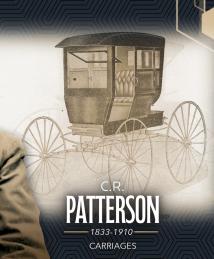Charles Richard (C.R.) Patterson
Charles Richard (C.R.) Patterson was an inventor and entrepreneur whose successful carriage company, C.R. Patterson & Sons Co., evolved to become the first and only Black-owned and operated automobile company in the United States.
Patterson was born in Virginia in 1833. When he was 10, his parents moved the family north in search of better opportunities. They settled in the small southwestern Ohio town of Greenfield, known at the time for its prevailing abolitionist views.
Working as a blacksmith for local carriage maker Dines & Simpson Coach and Carriage Co., Patterson was promoted to foreman and contributed to the company's reputation for high-quality products. He began working on his own projects in 1865, and in 1873, he and businessman James P. Lowe established their own carriage business. Known for quality work and fine craftsmanship, the business thrived.
Patterson earned three utility patents, two of which were related to carriages. One such patent, granted in 1887, was for a thill-coupling device. Thills are long wooden shafts that extend forward on either side of a horse and are attached to a harness just behind the horse's front legs, helping it to pull a wagon or carriage more easily. Patterson’s thill couplings connected the ends of the thills to the front wheel axle and featured a novel, adjustable, S-shaped spring that functioned as a shock absorber.
In 1893, during a financial panic and ensuing depression, Patterson purchased Lowe’s share of their company and named it C.R. Patterson, Son & Co. in collaboration with his youngest son, Samuel. However, Samuel fell ill in 1897 (and would later pass away in 1899), so Patterson’s eldest son, Frederick Douglass Patterson, left his teaching position in Louisville, Kentucky, to take over Samuel's role. At this point, the company was renamed C.R. Patterson & Sons Co.
Among Patterson & Sons’ most popular offerings were horse-drawn school buggies, and buggies designed for winter or stormy weather, which featured a door design similar to the sliding doors often found on today's vans. Instead of putting the rails on the outside of the doors, as was common for carriages at the time, Patterson & Sons placed the rails on the inside, sheltering them from sleet and snow, and preventing ice from jamming the doors. The company also built wedding carriages, hearses, and wagons designed for mail and other deliveries.
Patterson & Sons advertised heavily in both statewide and nationwide publications, often targeting specific audiences such as physicians who needed reliable carriages for making frequent house calls. The company regularly placed advertisements in the Journal of the National Medical Association, which had been formed by Black physicians in response to their exclusion from white medical organizations. These ads emphasized the fact that Patterson & Sons was a Black-owned company.
By 1900, Patterson & Sons had grown so much that in addition to its customized carriage production, it also began batch production. Twice a year, Patterson & Sons mailed a catalog with images and details of their standard designs, each of which could be adapted to meet customers’ needs. In 1901, the Report of the Second Annual Convention of the National Negro Business League noted the company’s successful rebound from the economic depression that had begun in 1893. In his speech at the convention, Patterson said the company was eclipsing pre-depression sales, had made additions to its plant and was producing 400 to 600 finished vehicles per year. “While this by no means compares in magnitude with the large carriage concerns of the country, you will please observe that when it comes to a comparison with builders of strictly high grade work, it shows up fairly well,” he said.
Following C.R. Patterson’s death in 1910, Frederick Patterson assumed control of the company. Frederick had already added automotive repair services to the company’s offerings, and in 1914, as automobiles were rapidly replacing carriages, C.R. Patterson & Sons began developing its own automobile. The Patterson-Greenfield automobile was introduced in September 1915. Unfortunately, production stopped in 1918 because the company was unable to compete with larger firms’ assembly-line mass production. C.R. Patterson & Sons later was renamed Greenfield Bus Body Co. and produced school bus and truck bodies, cargo trucks, hearses and moving vans before closing permanently in 1939.
In 2021, both C.R. and Frederick Patterson were inducted into the Automotive Hall of Fame in recognition of their success in establishing North America’s first Black-owned and operated automobile company, and helping to shape the burgeoning automotive industry.


